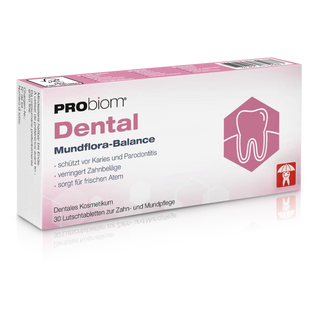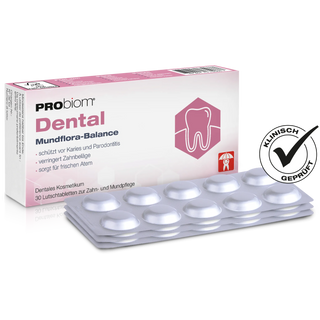Our mouth is home to billions of microorganisms that collectively form what's known as the oral microbiome. This complex ecosystem not only influences our oral health, but also impacts our overall well-being. But which bacteria actually live there? Which are beneficial, and which can cause problems? And how does the body maintain balance in this microcosm? In this article, you'll learn everything you need to know about the most important bacteria in the mouth, their functions, and why balance is so crucial.
The oral microbiome – more than just bacteria
The oral microbiome consists primarily of bacteria, but fungi, viruses, and archaea are also part of this complex network. It colonizes different regions of the mouth: the tongue, tooth surfaces, interdental spaces, periodontal pockets, and salivary glands. Each area offers different living conditions and thus also different bacterial communities.
These microorganisms help break down food, protect the oral mucosa, and fight off foreign substances. However, imbalances in the oral microbiome can lead to tooth decay, periodontitis, and other diseases.
The most important bacteria in the oral microbiome
Below we present some of the most important bacterial species and genera that shape the oral environment:
Streptococcus
The Streptococcus genus is particularly dominant in the mouth. Different species perform different functions. For example, Streptococcus salivarius is commonly found on the tongue and acts as a protective barrier against pathogens. Others, such as Streptococcus mutans , are the main cause of tooth decay because they metabolize sugar into acids that attack tooth enamel.
Actinomyces
These bacteria are primarily found in plaque and play a role in the formation of tartar. They are able to break down organic substances and thus contribute to maintaining the bacterial community. However, they can also be involved in gum disease.
Porphyromonas
Porphyromonas gingivalis, in particular, is known to be a key pathogen in periodontitis. This bacterium can manipulate the immune system and promote inflammation in the gums, leading to tissue degradation.
Fusobacterium
Fusobacterium nucleatum is a bridge bacterium that connects different microorganisms. It plays an important role in plaque formation and can also increase inflammation.
Veillonella
These bacteria use lactic acid produced by other microbes as an energy source. This helps regulate the pH in the mouth and make the environment less acidic, which counteracts caries-promoting processes.
Lactobacillus
Lactobacillus species are primarily known for their probiotic properties. They produce lactic acid and other antibacterial substances that can inhibit the growth of harmful germs. However, some species, in high concentrations, can also contribute to tooth decay.
The balance in the oral microbiome
A healthy oral microbiome is characterized by a balanced composition and diversity of microorganisms. Disturbances arise from factors such as poor oral hygiene, excessive sugar consumption, smoking, or even antibiotics that disrupt the microbiome's balance.
When pathogenic bacteria gain the upper hand, diseases such as caries or periodontitis can develop. Therefore, it's important to maintain balance through good oral hygiene, regular dental checkups, and a balanced diet.
Summary table: Important bacteria in the oral microbiome
| Bacterial species | Main deposits | Function / Role | Importance for oral health |
|---|---|---|---|
| Streptococcus salivarius | tongue, saliva | Protection against pathogens | Positive – promotes healthy balance |
| Streptococcus mutans | Tooth surfaces | Sugar breakdown to acid | Negative – Main cause of caries |
| Actinomyces spp. | Plaque, gum pockets | Decomposition of organic substances | Mixing roller – can form tartar |
| Porphyromonas gingivalis | Periodontal pockets | Inflammatory triggers | Negative – Key pathogen periodontitis |
| Fusobacterium nucleatum | Plaque | Bridging between microbes | Negative – promotes inflammation |
| Veillonella spp. | Plaque, tongue | Lactic acid degradation, pH regulation | Positive – protects against acid damage |
| Lactobacillus spp. | Plaque, saliva | Probiotic effect, lactic acid formation | Mixed – supports microflora, but can promote caries |
Conclusion
The oral microbiome is an extremely complex and dynamic ecosystem that contributes significantly to the health of our oral cavity. The balance between helpful and potentially harmful bacteria determines whether our mouth remains healthy or whether diseases develop. Through conscious care and lifestyle habits, you can support this delicate balance and thus ensure your long-term oral health.













